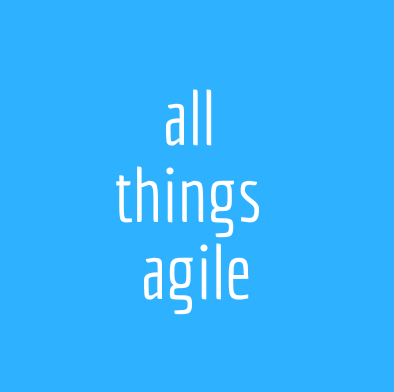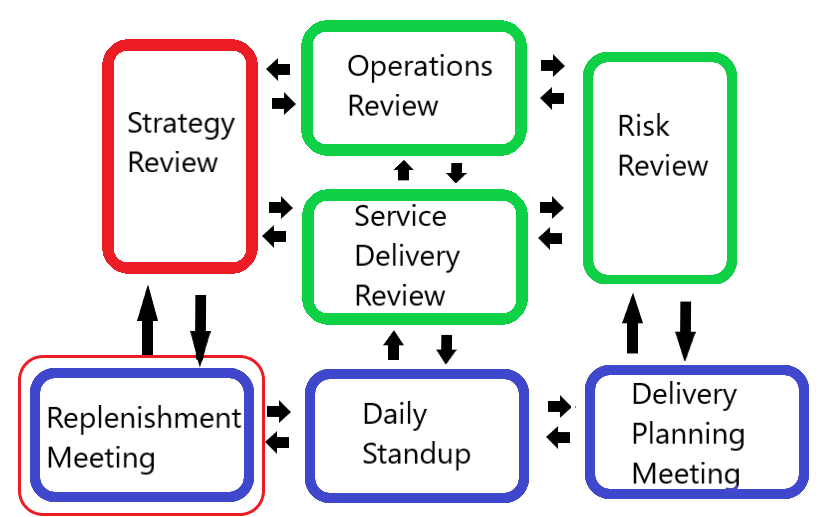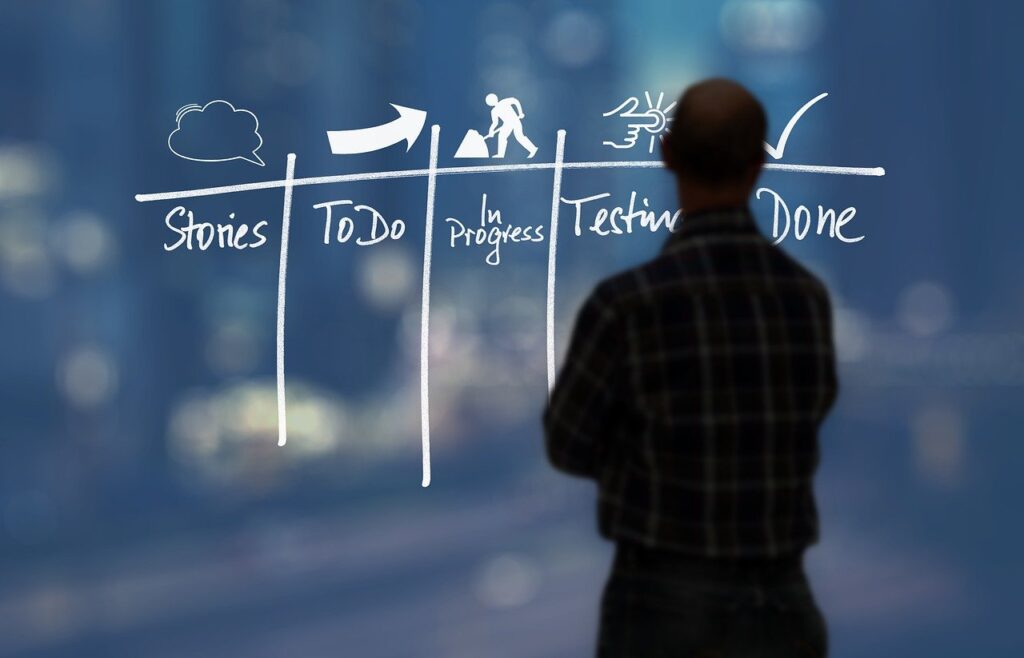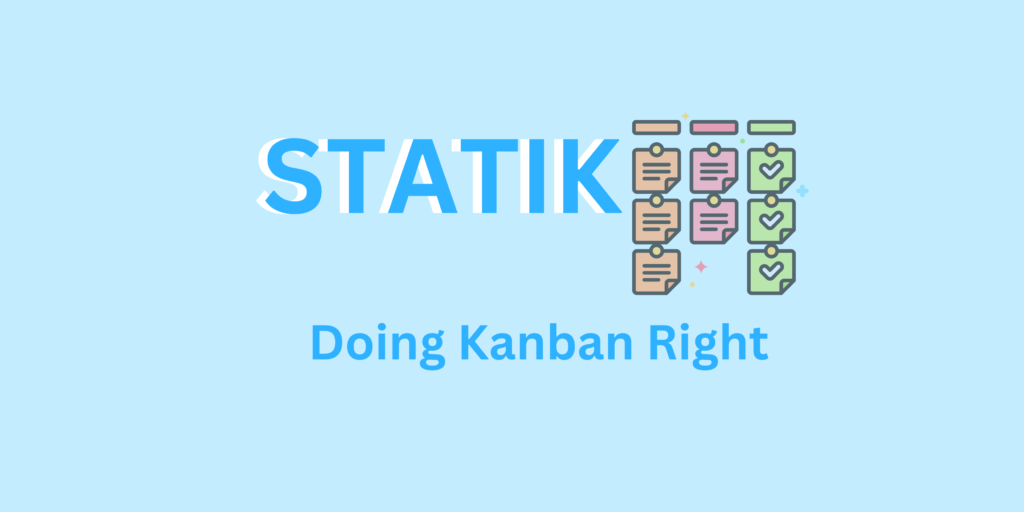
In a previous post I introduced you to the Principles and Practices that define the Kanban Method. I also mentioned that while we hear a lot about Kanban and see the cute TODO| In Progress | DONE boards everywhere, there’s a lot more to Kanban than boards and post-its.
In fact, a lot of people get excited about the flexibility in Kanban and its first principle of “start with what you do now”. So, people slap together a board and use it… while keeping everything the same. They ignore all the rest in the Kanban Method, which is about managing the work preserving flow and evolving the system.
However, if we are truly talking about managing work and initiatives in organizations in an effective way, we must introduce Kanban in a more useful way than boards and post-its. And the best way for that is by using STATIK.
You can watch it below or continue the read!
What is STATIK?
The professional and serious coach-like way to approach Kanban in an organization proposed by David Anderson is called Systems Thinking Approach To Introducing Kanban, or STATIK for short. It offers 6 steps and pre and post-conditions that, when followed through, can guarantee your Kanban will introduce systemic improvements in your organization.
What I also love about this approach is that many times the whole concept of Systems Thinking can feel too abstract. And STATIK is nothing more than applied Systems Thinking and Kanban principles.
While we are not going to dive deeper into Systems Thinking, though, if you’ve been reading my posts for a while now or if you are part of The Agile Circle you heard of it before. In a nutshell Systems Thinking approaches prevent the myopic outlook into issues ignoring its ramifications, or mistaking symptoms for cause.
STATIK is a way to take a holistic look at your current system of work and investigate what could make it better.
STATIK encourages a broad perspective, enables global optimizations rather than just local fixes, ensuring that improvements are both effective and sustainable. Simply put, your agile team is not responsible for agility in the organization and whenever your focus is to optimize things for the happiness of one team alone, you are foregoing an opportunity to truly improve the bottom line, the customer satisfaction and operation effectiveness.
And that’s because STATIK tells you to first start with the end in mind.
Pre-Condition: Understand the Purpose of the System as a Customer
Before we start creating boards of any kind, you want to talk to people and make sure there is understanding and agreement about what “fit for purpose” means and what makes the system (your department, your product-making organization, etc.) fit for purpose for the customer. It’s the conversation about the “WHY” for things.
A few helpful questions could be:
- WHAT: What is the primary function of your team or organization? Articulating this helps crystallize your unique value offering.
- WHO: Who benefits from your work? Identify your clientele and their specific needs regarding the services you provide. The client fits here, no doubt, but also stakeholders and allies.
- WHY: What is the purpose behind your efforts? What are you trying to help the customer with or solve for them? Reflect on the influence your product or service has on your customers.
Once these are clarified and validated you then have a baseline for value: what it is and to whom it matters. This precondition matters and should be done even if you are designing a Kanban for a specific project that will end and with teams that will disband after.
And from this point on, we are calling that team, department, their work and everything together, “the system”.
Step 1: Understanding Sources of Dissatisfaction with the Current State
With the pre-condition satisfied, you have a good idea of what the system should be delivering in terms of value. Value is no longer elusive. Now, in this first step you are still in asking mode. And it’s time to ask about the performance of the system. What has been working? What has not been working?
This is a thorough investigation of dissatisfaction sources within the current system, both internal and external. Internally, this encompasses all factors that hinder your team’s ability to meet expectations, such as feeling overwhelmed or compromising on the quality of products/services due to pressing deadlines. Externally, dissatisfaction stems from the clients’ experiences, which may include issues like erratic or delayed deliveries and subpar quality.
To effectively pinpoint these dissatisfaction sources, consider the following actions:
- Survey formally and informally both your customers and team members to uncover their grievances. Don’t just guess.
- Compile and display all feedback collectively for easy analysis. Look for themes, peaks, valleys.
- Categorize the feedback into internal and external sources.
- Bonus points if you are using deeper analysis such as the Fishbone or the 5 Whys to get out of the obvious answers.
Grasping these dissatisfaction elements will help in setting realistic expectations as you design a work management system that proactively addresses these concerns.
Step 2: Analyze the Work Demand
You now know your purposes and what is not working optimally in your current state. In the second step in STATIK, it’s time to better understand:
- Where work comes from. Is it coming internally, from other departments? Is it directly requested by customers, third parties?
- The rate of arrival of work. Do you receive requests or work items every day? Every hour? Sporadically? Random peaks? Seasonality?
- The expectations surrounding the requests. Understand what is asked, the expectations on level of quality and speed of fulfillment.
This will allow you to better define what your work items are and how much work goes into creating them.
For example, a support team can have different types of requests and some of those can naturally take longer than others. Some of these requests might even be serviced on a lower level of quality when compared to others or vary depending on the client.
Whatever type of work you do, you should know intimately the nature of your work. It’s part of being a professional, offering professional results.
But you are not making decisions yet. You are just discovering.
Step 3: Analyze the Current Delivery Capability
Now it starts getting fun, because you look inside.
We often hear about “capacity planning” and that’s an important aspect of great work. But in order to plan fr said capacity, you must understand what it is! Not judge it, but know what it truly offers as output, before you start optimizing. No point in saying you can create a whole API in a month if you have never been able to do so before.
It’s beneficial to have access to historical data from dashboards or ticketing systems. This data can provide insights into key performance metrics such as:
- Delivery Time: How long does it take for you to deliver work? What’s the average duration from work initiation to completion?
- Delivery Predictability: How consistent are your delivery times? Are they subject to significant variability?
- Expectation vs Reality: what’s the gap between the expectations and your current capability? How does your actual delivery performance measure up against stakeholder expectations?
As you analyze this information, you can identify areas where your delivery process excels and pinpoint opportunities for improvement. Understanding these metrics not only helps in setting realistic goals but also in aligning your team’s capabilities with customer expectations.
Armed with that sort of understanding you can now start crafting your Kanban board.
Step 4: Model the Current System Workflow

It’s time to look at the current steps you take to complete the work. In Step 4 of STATIK Notice the major tasks, categories, phases. This is not dissimilar to doing a Value Stream mapping, although chances are you are doing it on a smaller scale with your team and departments.
Notice I said current. It’s not time to decide to add new steps or remove anything. You want to look at what is. You want to first see how you are currently delivering value to your customers, if at all. In fact, it’s a great idea to not filter and visualize both value-add and non-value-add activities in your process so you gain better understanding of your workflow. If you think having a step dedicated to Project manager Approval is irrelevant, but you currently do that, keep that step in.
A last piece of advice is to focus on activities, not on who is doing the work. Even if Tammy is the only person who can do performance testing, add performance testing in your workflow, not Tammy. You will deal with constraints such as bottlenecks later. For now, they are information.
Step 5: Identify Your Classes of Service
Now the time comes to identify levels of priority. Take samples of your historical data and inspect them against the classes of service.
Most people teams and departments will have their own priority systems like P1, P2, P3 or Urgent, Normal, etc. They are not always useful, though. It’s not uncommon that something becomes “urgent” because Dave, the Senior VP screamed the loudest.
In Kanban we look at priority under a more scientific light: by using cost of delay. While I won’t explain this in detail, we are literally talking about opportunity cost and real levels of risk. Dave screams, while frightening, do not constitute a high opportunity cost. The usual Kanban classes of service are:
- Expedite – for work items with critical priority and a very high cost of delay. This is literally “the company is losing money” type of request. Which means realistically very few items should be placed here.
- Fixed delivery date – for assignments with a fixed date and a high cost of failing to deliver on time. A fixed date is not a date that our fictitious Dave gave us. It’s a real date, such as missing an opportunity at a trade show or a season like black Friday, or a law that has a limited timeline to be adopted.
- Standard – for everyday work items with a moderate cost of delay. A lot of your work will likely fall in this category, and they are probably executed in order of arrival.
- Intangible – for assignments with little to no cost of delay. Consider your nice-to-have here.
Step 6: Define Your Kanban System
The final step is about creating a pull system. “Don’t send me work, let me get to work when I’m available.”
This system streamlines your workflow, allowing for a faster and more reliable response to demands. It prevents overloading team members by showing the work visually, limiting ongoing tasks, and tracking completion times. As tasks are completed, new ones are introduced based on available capacity. The aim is to efficiently move tasks from ‘Ready’ to ‘Done’—essentially, to ‘Get Stuff Done’ effectively. You will:
- Introduce your WIP limits.
- Make your policies explicit.
- Establish feedback loops for bi-directional communication.
- And start proactively managing the work in your system and start making data-driven decisions, like I explained in the previous post.
So many more practices can take place, but as you are starting with Kanban you are on level 0 moving to level 1 according to the Kanban Maturity Model. Which means for now that’s it; your Kanban System is done!
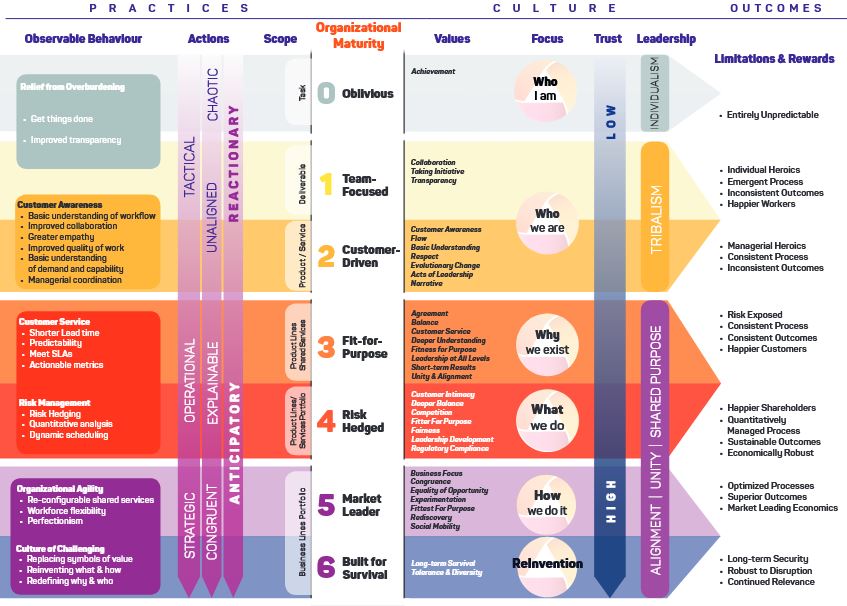
Post-Condition: Socialize and Negotiate expectations
Probably your teams and many stakeholders took part in the work sessions you hosted while designing your Kanban System. But even if they did, what follows now is educating people on the nature of how you are working and why. And monitoring and proactively managing your work.
Start noticing the effects of the new system. Are you communicating what’s happening within your work better? What changes are you observing on quality or speed? Are your customers more satisfied?
Collect observations from everybody. And it’s advised to hold workshops with different teams from dependent services to synchronize the work processes of multiple Kanban Systems.
Final Words
Kanban can be so helpful in heightening performance and quality of work, and STATIK is arguably the most useful approach to give your Kanban some solid ground as you start.
In my experience coaching teams and leading continuous improvement work as an coach, using STATIK is not one afternoon workshop, but several workshops in a course of one or two weeks if you want to involve people and be a bit more structured. What is partial time in course of a week in the grand scheme of things?
The point? There is no reason to rush things, especially the preconditions and first steps to establishing your Kanban.
That being said, everything in Kanban is about evolutionary steps, so avoid perfectionism and start trying with your team even if all you have is a day to get to the first iteration of your Kanban System.
I could not end this without citing the original source, THE David Anderson about STATIk.
If you are interested in growing your agile skills, other than the blog and videos, consider joining the newsletter Agile Circle. It’s totally free, and you’ll receive insights in your inbox, be invited to events and workshops in our community of practice, The LAB of All Things Agile, and get first word in discounts for our paid programs and coaching.
